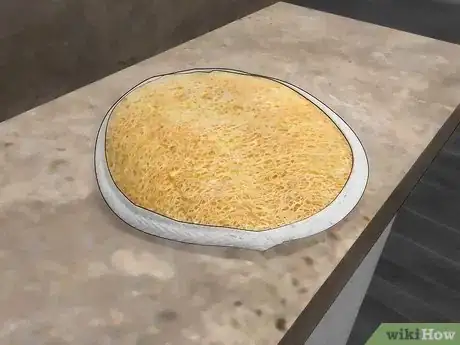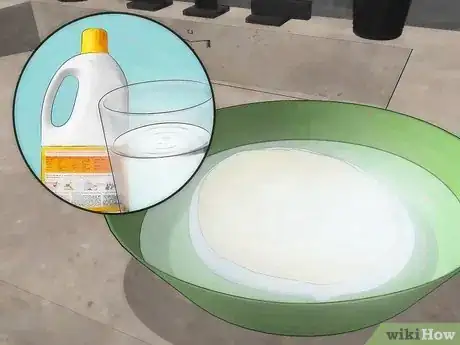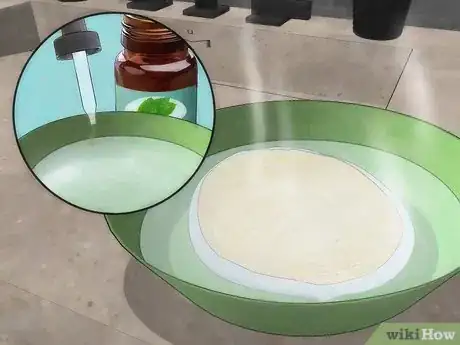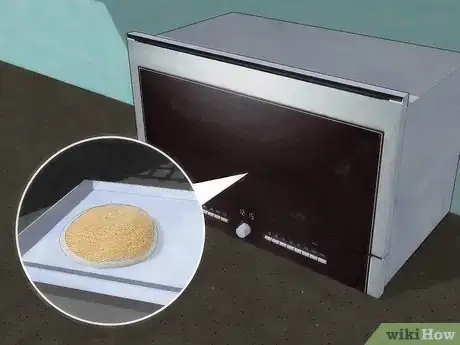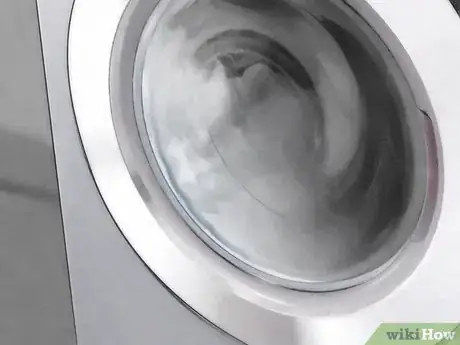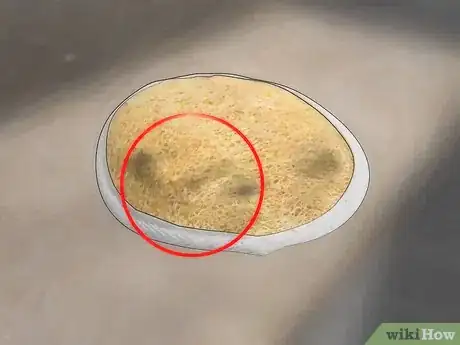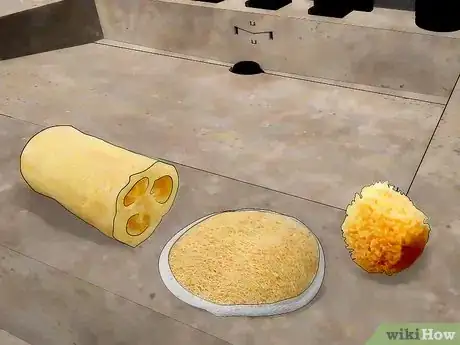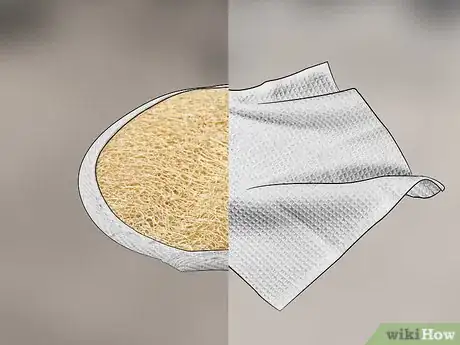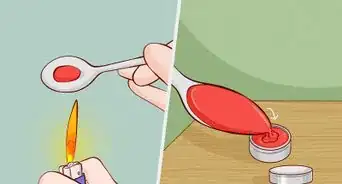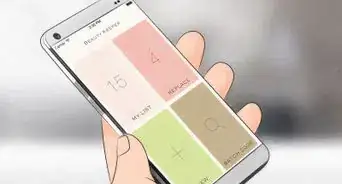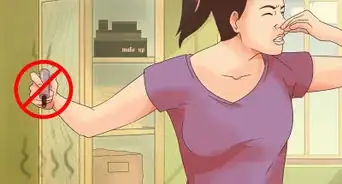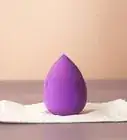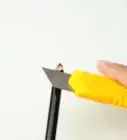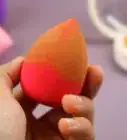This article was medically reviewed by Luba Lee, FNP-BC, MS. Luba Lee, FNP-BC is a Board-Certified Family Nurse Practitioner (FNP) and educator in Tennessee with over a decade of clinical experience. Luba has certifications in Pediatric Advanced Life Support (PALS), Emergency Medicine, Advanced Cardiac Life Support (ACLS), Team Building, and Critical Care Nursing. She received her Master of Science in Nursing (MSN) from the University of Tennessee in 2006.
This article has been viewed 189,287 times.
A loofah, also known as a sponge, is used for exfoliating dead skin and as a general-purpose sponge for personal hygiene. There are natural loofahs, which come from the fibrous skeleton of the loofah fruit, and loofahs made from plastic and synthetic material. Over time, a loofah's tiny nooks and crannies fill with nasty bacteria and fungi. That’s why it’s important to keep your loofah sanitary so it remains safe to use.
Steps
Maintaining and Sanitizing Your Loofah Regularly
-
1Rinse it well. Rinse your loofah well after each use and squeeze and shake out excess water.[1]
-
2Keep it dry. Bacteria loves growing in wet places, so keep your loofah dry to prevent it from becoming a breeding ground for nasty germs that cause folliculitis, yeast, and fungal infections.[2] Once you've rinsed your loofah, store it in a cool, dry place.Advertisement
-
3Disinfect it. Loofahs start out hygienic, but the accumulation of dead skin cells and storage in humid environments turns it into a bacteria haven. Soak your loofah in diluted bleach for five minutes each week to kill bacteria and germs.[3]
-
4Use essential natural oils. Essential oils have antimicrobial properties that help deter bacterial growth. They also contain no irritants or harsh chemicals, which is good for both your skin and the environment.[4]
- On a weekly basis, soak your loofah in a solution made up of warm water and a few drops of pure essential oils. You can purchase essential oils from most health food stores.
-
5Microwave it to kill the germs. Your microwave is a powerful weapon in killing germs and infection causing bacteria. You can periodically microwave a synthetic loofah for two minutes to decontaminate it.
- Before placing the loofah in microwave, make sure it is completely wet and does not contain any metal parts to avoid the risk of fire.[5]
-
6Wash your loofah in the washing machine. Go ahead and give your loofah a spin in your washing machine! You should wash it every week in cold water using a mild or gentle cycle. Do not put the sponge in the dryer as the natural fibers will melt.[6]
Replacing Your Loofah
-
1Know when it’s time to throw it away. Avoid becoming so attached to your loofah that you keep it around when it’s no longer safe to use. Discard your loofah if you notice mold growth or if it smells mildewy or musty. Doing so will help prevent you from catching a nasty skin infection.
- Replace a natural loofah every three to four weeks. Synthetic loofahs can be used for up to two months.[7]
-
2Decide on whether to purchase a natural or synthetic loofah. There are many different natural and synthetic loofah products on the market. Be aware that loofahs made from natural substances do not last as long as those used in synthetic sponges. Synthetic sponges will last longer on average and require less maintenance.
-
3Consider an alternative to a loofah. Loofahs are a favorite bath and shower accessory for many people; however, because of all the nooks and crannies in a loofah, it is very susceptible in breeding bacteria. You might want to consider ditching the use of loofahs for a more sanitary alternative instead.
- Washcloths tend to be used more frequently and easier to wash and dry. In addition they accumulate less bacteria due to their physical structure.[8] If you can't bare to part with your loofah, then alternate days between using a washcloth and a loofah.
References
- ↑ https://health.clevelandclinic.org/2014/07/loofahs-can-double-as-bacterial-breeding-grounds/
- ↑ http://www.drbaileyskincare.com/blog/tips-to-prevent-skin-infections-from-your-shower-sponge-and-razor/
- ↑ https://health.clevelandclinic.org/2014/07/loofahs-can-double-as-bacterial-breeding-grounds/
- ↑ http://www.huffingtonpost.com/2015/07/31/loofah-bacteria_n_4330801.html
- ↑ http://news.ufl.edu/archive/2007/01/researchers-microwave-oven-can-sterilize-sponges-scrub-pads.html
- ↑ http://www.ncbi.nlm.nih.gov/pubmed/8893526
- ↑ https://health.clevelandclinic.org/2014/07/loofahs-can-double-as-bacterial-breeding-grounds/
- ↑ https://health.clevelandclinic.org/2014/07/loofahs-can-double-as-bacterial-breeding-grounds/
About This Article
To clean your loofah or natural sponge, rinse and squeeze it out after each use. Then, store it in a cool, dry place so it doesn’t grow bacteria. Once a week, you should also disinfect it. You can do this by soaking it for 5 minutes in diluted bleach or a diluted essential oil. Or, microwave it for 2 minutes while it’s wet, which will kill any bacteria gathered on it. You can also wash your loofah in the washing machine, but don’t put it in the dryer, since this can melt its natural fibers. For more tips from our co-author, including how often to replace your loofah, read on!

